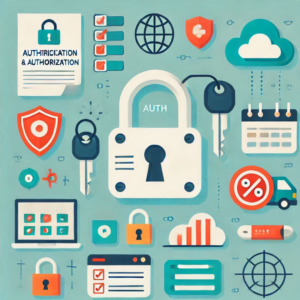Overview of AuthN and AuthZ in Cloud-Native Environments with the Use of DevOps

In modern cloud-native environments, the concepts of authentication (AuthN) and authorization (AuthZ) are critical for securing applications and services. Authentication verifies the identity of a user or system, while authorization determines what an authenticated user or system is allowed to do. In the context of VMware Tanzu, these processes are essential for managing access to applications and resources deployed on Kubernetes, especially with the use of DevOps practices.
VMware Tanzu provides a robust framework for implementing AuthN and AuthZ, leveraging various identity providers and role-based access control (RBAC) mechanisms. With the use of DevOps practices, Tanzu ensures that applications are secure and accessible. This blog will explore how Tanzu integrates these security features, guaranteeing that applications are not only accessible but also secure.
Understanding Authentication in VMware Tanzu
VMware Tanzu authenticates users primarily by integrating with identity providers (IdPs) that support protocols such as OpenID Connect (OIDC) and Lightweight Directory Access Protocol (LDAP). This allows organizations to leverage existing user directories and authentication mechanisms, streamlining the user experience while enhancing security.
- Identity Providers: Tanzu supports various IdPs, including Okta, Google, Azure Active Directory, and GitHub. By integrating with these providers, Tanzu can authenticate users based on their existing credentials, reducing the need for separate login systems.
- Single Sign-On (SSO): The Tanzu Application Platform (TAP) supports SSO, allowing users to authenticate once and gain access to multiple applications without needing to log in separately for each one. This is particularly beneficial in enterprise environments where users interact with numerous applications daily.
- Pinniped Integration: For Kubernetes clusters, Tanzu includes Pinniped, an open-source project that simplifies user identity and authentication management. Pinniped enables Kubernetes to authenticate users against external identity providers, providing a seamless experience for users accessing cluster resources.
- Token-Based Authentication: Once authenticated, users receive a token that they can use to access resources within the Tanzu ecosystem. This token is typically a JSON Web Token (JWT), which contains claims about the user’s identity and permissions.
Implementing Authorization in VMware Tanzu
Authorization in VMware Tanzu is primarily managed through Role-Based Access Control (RBAC). RBAC allows administrators to define roles with specific permissions and assign those roles to users or groups. With the use of DevOps practices, this granular control over permissions is streamlined, enabling more efficient management in dynamic development environments. This control is essential for maintaining security in multi-tenant environments.
- Role Definitions: In Tanzu, you can define roles at various levels, including cluster-wide roles and namespace-specific roles. This flexibility allows organizations to tailor access controls based on their specific needs, ensuring that users have the appropriate level of access to resources.
- Binding Roles to Users: Once you define roles, you bind them to users or groups. Kubernetes RBAC policies specify which users or groups can access which resources and what actions they can perform.
- Audit Logging: Tanzu provides audit logging capabilities that track access and changes to resources. This is crucial for compliance and security monitoring, allowing organizations to review who accessed what resources and when.
- Integration with API Gateways: For applications exposed through APIs, Tanzu integrates with API gateways that enforce authorization policies. This ensures that only authorized users can access specific API endpoints, adding an additional layer of security.
Best Practices for AuthN and AuthZ in VMware Tanzu with the Use of DevOps
Implementing effective authentication and authorization strategies in VMware Tanzu requires careful planning and adherence to best practices. Here are some key recommendations:
- Use Centralized Identity Management: Leverage centralized identity providers to manage user identities and authentication. This approach reduces complexity and enhances security by ensuring consistent handling of all authentication requests.
- Implement Least Privilege Access: Adopt the principle of least privilege by granting users only the permissions they need to perform their job functions. Regularly review and adjust roles and permissions as necessary to minimize security risks.
- Regularly Audit Access Controls: Conduct regular audits of access controls and permissions to ensure compliance with organizational policies and regulatory requirements. This helps teams identify any potential security gaps that need to be addressed.
- Utilize Multi-Factor Authentication (MFA): Where possible, implement MFA for additional security. This adds an extra layer of protection by requiring users to provide multiple forms of verification before accessing resources.
- Monitor and Respond to Security Events: Utilize monitoring tools to detect unauthorized access attempts and other security events. Establish incident response protocols to address any security breaches promptly.
Conclusion
Authentication and authorization are fundamental components of securing applications and services within VMware Tanzu, especially with the use of DevOps practices. By leveraging integrated identity providers, implementing robust RBAC policies, and adhering to best practices, organizations can ensure their cloud-native applications are both accessible and secure. As cloud-native technologies continue to evolve, understanding and implementing effective AuthN and AuthZ strategies such as Authentication and Authorization in IT Systems is essential for maintaining security and compliance. VMware Tanzu provides the tools and frameworks necessary to achieve these objectives, enabling organizations to focus on innovation while keeping their applications secure. This approach not only enhances security but also improves user experience, promoting collaboration and faster value delivery in development environments.
If you need assistance with software services, Cloudastra Technologies is here to help. Visit our website for more business inquiries!